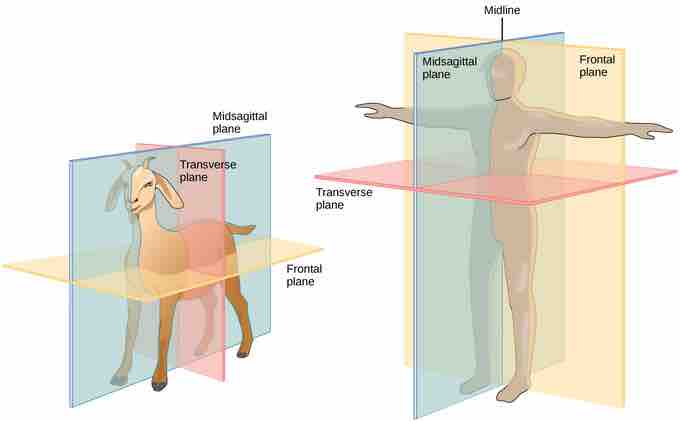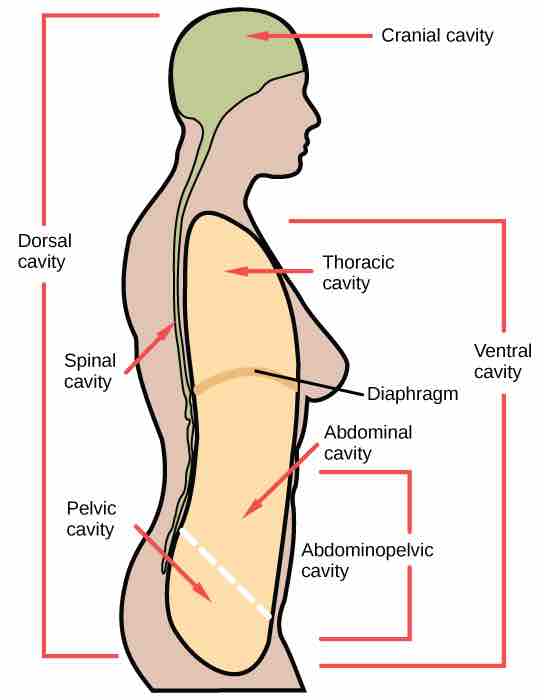Animal Body Planes and Cavities
A standing vertebrate animal can be divided by several planes that can be used to as references to describe locations of body parts or organs. A sagittal plane divides the body into right and left portions. A midsagittal plane divides the body exactly in the middle, making two equal right and left halves. A frontal plane (also called a coronal plane) separates the front (ventral) from the back (dorsal). A transverse plane (or, horizontal plane) divides the animal into upper and lower portions. This is sometimes called a cross section; if the transverse cut is at an angle, it is called an oblique plane .

Body planes
Shown are the planes of a quadruped goat and a bipedal human. The midsagittal plane divides the body exactly in half into right and left portions. The frontal plane divides the front and back, while the transverse plane divides the body into upper and lower portions.
Vertebrate animals have a number of defined body cavities . The posterior (dorsal) and anterior (ventral) cavities are each subdivided into smaller cavities. In the posterior cavity, the cranial cavity houses the brain and the spinal cavity (or vertebral cavity) encloses the spinal cord. Just as the brain and spinal cord make up a continuous, uninterrupted structure, the cranial and spinal cavities that house them are also continuous. The brain and spinal cord are protected by the bones of the skull and vertebral column and by cerebrospinal fluid, a colorless fluid produced by the brain, which cushions the brain and spinal cord within the posterior (dorsal) cavity.

Body cavities
Vertebrate animals have two major body cavities. The dorsal cavity, indicated in green, contains the cranial and the spinal cavity. The ventral cavity, indicated in yellow, contains the thoracic cavity and the abdominopelvic cavity. The thoracic cavity is separated from the abdominopelvic cavity by the diaphragm. The abdominopelvic cavity is separated into the abdominal cavity and the pelvic cavity by an imaginary line parallel to the pelvis bones.
The anterior cavity has two main subdivisions: the thoracic cavity and the abdominopelvic cavity. The thoracic cavity is the more superior subdivision of the anterior cavity and is enclosed by the rib cage. The thoracic cavity contains the pleural cavity around the lungs and the pericardial cavity, which surrounds the heart. The diaphragm forms the floor of the thoracic cavity, separating it from the more inferior abdominopelvic cavity. The abdominopelvic cavity is the largest cavity in the body. Although no membrane physically divides the abdominopelvic cavity, it can be useful to distinguish between the abdominal cavity, the division that houses the digestive organs from the pelvic cavity, the division that houses the organs of reproduction.